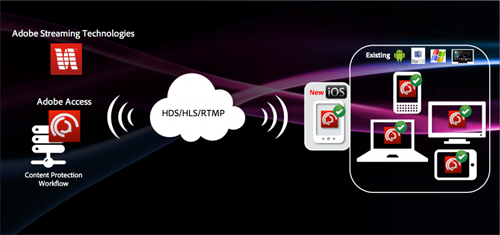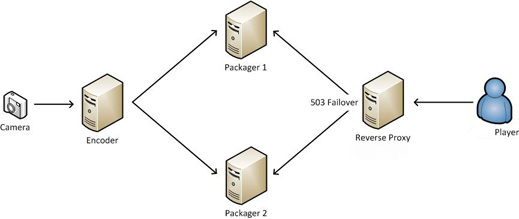
We are publishing a video player design (PC version) which you could use in your projects. It was done by our designer, Flash and HTML5 sources will be published soon. Design sources in PSD.

We are publishing a video player design (PC version) which you could use in your projects. It was done by our designer, Flash and HTML5 sources will be published soon. Design sources in PSD.

Following our latest review of the features of Wowza Media Server, let’s now look at how to transcode video streams using this plugin. This feature is helpful when you only have a single source of high quality video and you would like to deliver the video to multiple devices. Yet another example is video stream failback to audio only in an iOS application (AppStore’s requirement), where you need an additional stream with cut-off video. A typical approach to this problem requires a transcoder (you can also generate an audio only stream using the new Adobe Media Server 5.0). Usually, a transcoder is a separate server optimized for video handling. Wowza offers an alternative: transcoding at the media server level. Let’s look at how it works in more detail. Continue reading

We are happy to report that, a new release has been published of the two main Adobe products that you need to build a professional Over The Top (OTT) service. Adobe Media Server Professional 5 is a media server required for pre-processing and delivery of content to a broad range of devices. Adobe Access 4 is a content protection server, now enhanced with support for iOS devices. This way, Adobe has solved the issues of cross-platform delivery of premium content to most of today’s popular devices. In the next posts, we will provide guidelines on migrating and configuring of new releases. But for now, let’s look at some of the technical features of the new products. Continue reading

Wowza Media Server 3.1 is a popular media server to enable live streaming and VOD content delivery. Wowza Media Server’s major benefit is that it supports a variety of media formats. In this post, we will discuss how to enable live streaming using Wowza. Continue reading

If you offer online video services, no doubt you have not once thought of video views analytics. In a Flash-based OSMF framework, there is GTrackPlugin to collect statistics on content viewing. Also, you can also use our OSMF Video Analytics.
However, if your service HTML5 based, you need a purpose designed viewing analytics. To build such a plugin, HTML5 Media API should be used. For more on this API, read this post on HTML5 player implementation. Continue reading
Year by year, we become more involved with media technology than ever before. The World Wide Web is also sensitive to this trend as shown by immense success and popularity of online video services, such as YouTube. However, you cannot run such systems without the technology for video content playback at the end user level.
A classical approach is to build a video player with Flash. Probably you can hardly find a more popular Web browser plugin than Flash Player today. However, a weakness of this approach is the necessity to install the Flash plugin, missing from many devices by default. For example, whatsoever popular iPhone and iPad are, they cannot run Flash applications from within the browser. The way out of this situation is to use HTML5. Continue reading

Today, smart phones and tablets have become integral parts of our daily life. People interact with such devices frequently and lengthly over a day. So, mobile and tablet applications have become important channels for content distribution. Launching of virtually any major service includes ad-hoc application development. Segmentation of mobile applications greatly increases the cost to implement a mobile strategy. Adobe AIR allows you to reduce the cost-to-market for cross-platform services. You can develop your application once and then adapt it easily to a range of devices or screens (also, there’s more dexterous Flash developers on the market than iOS or Android experts). In this article, we’ll dwell on some features regarding development of mobile applications with Adobe AIR. Continue reading


Today, we are happy to publish a post on the new features of Adobe Flash Access 3.0. This is sort of a belated attempt to compensate certain gaps in the Adobe’s documentation. However, as soon as the next generation of Adobe Flash Access supporting iOS will have been announced, the basic features of the current release will become even more important. Continue reading

Online video technologies form an essential part of the Web today. New services and platforms are constantly emerging. By developing multimedia Adobe Flash applications based on OSMF, you can focus directly on user experience rather than multimedia content handling algorithms. Recently, Adobe has issued a new version of OSMF 2.0 multimedia framework. This post is focused on the essential innovations of the latest release. Generally speaking, OSMF 2.0 is the foundation of most of modern video players that ensures uniformity of their design. Continue reading